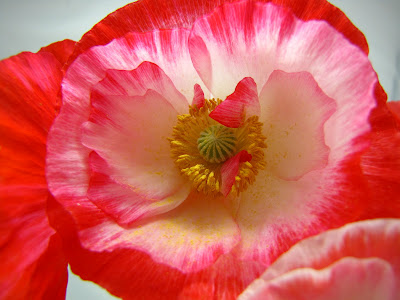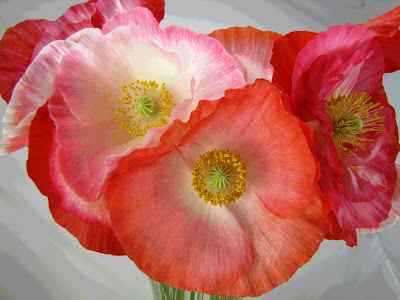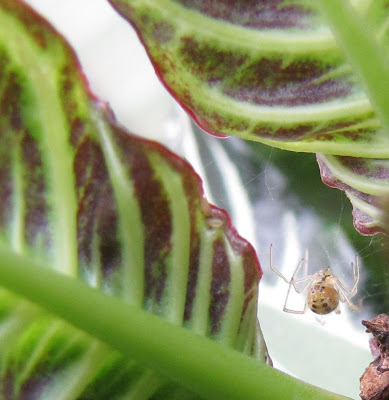 Above: Yellow Aquilegia, common name Columbine - rescued from my local K-Mart. The darkish spot where it is planted provides some nice light/shadow contrast - very chiaroscuro!
Above: Yellow Aquilegia, common name Columbine - rescued from my local K-Mart. The darkish spot where it is planted provides some nice light/shadow contrast - very chiaroscuro!The Lakewood Post Office, where our PO box is located, is next to K-Mart. As the garden season gathered steam the plant display outside the store grows larger, until I'm compelled to wander over to take a look. Lately, the plants have been looking rather sad - it appears the store employees don't maintain a good watering schedule. However, this is a situation ripe for a vigorous, strong-willed plant to rise above the rest. Amongst the sad looking plants I spied this yellow Columbine. I didn't get it that day, but had to go back the next day and save it from its K-Mart fate.
I put it in the dirt strip of our greenhouse at the darker end, where it is keeping company with some variegated violets. Because the deer seem to be able to find whatever young plant I put out in the front yard, the plan is to let this plant increase in size for a year or two - harvesting seeds whenever possible, and eventually planting it out front some day when I can carve out a spot for my growing Columbine collection. Which reminds me - gotta get those dark purple and double pink Columbine seeds into some starting mix.
 Above: Current Lakewood Manor resident - light purple Columbine.
Above: Current Lakewood Manor resident - light purple Columbine. Above: Another current resident - maroon double bloom Columbine.
Above: Another current resident - maroon double bloom Columbine.


























